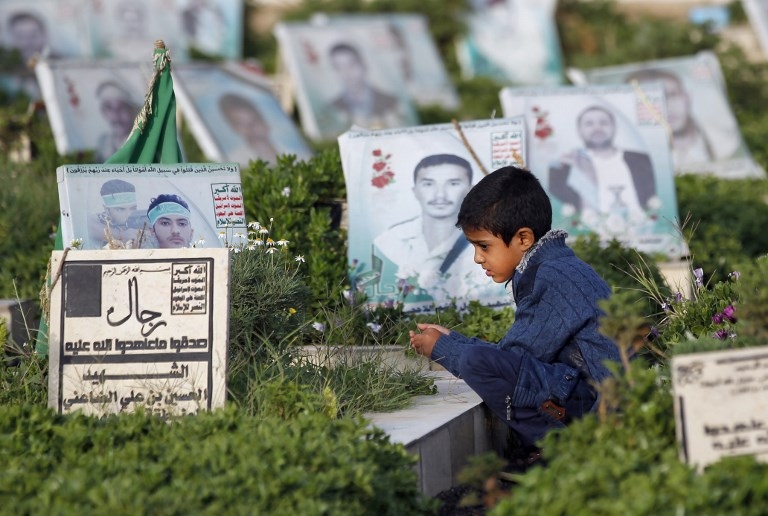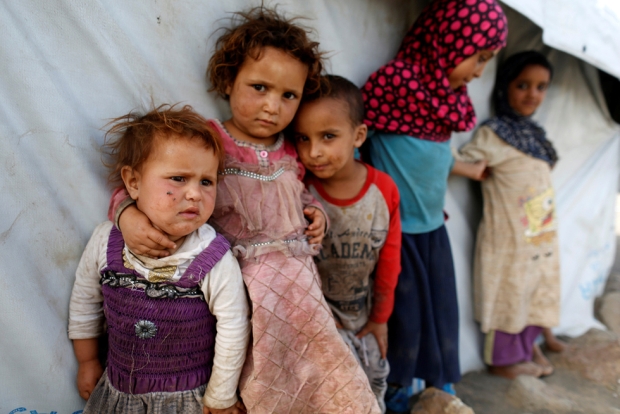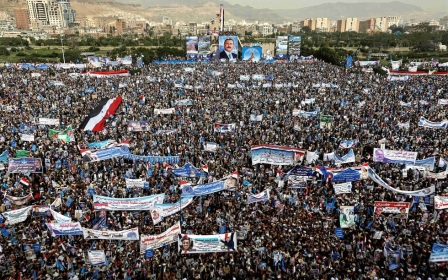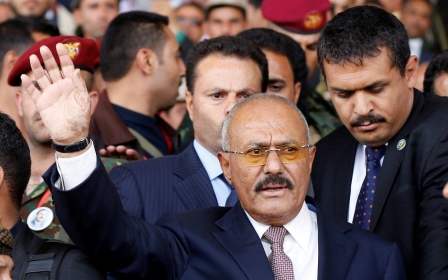Yemeni civilians bear brunt of 'man-made catastrophe', says UN

Civilians in Yemen continue to bear the brunt of an "entirely man-made catastrophe" as the civil war in the country rages on, according to the UN.
The latest comments come amid a growing cholera outbreak that has seen more than 600,000 Yemenis contract the disease, which has killed at least 2,000.
In a report published on Tuesday, the UN described the Saudi-led coalition's air strikes as being the "leading cause" of deaths in Yemen as the civilian death toll increases across the country.
It also blamed the coalition for stoking a food crisis that has left 7.3 million on the brink of famine.
But the Popular Committees affiliated with the Houthis and the army units loyal to former President Abdullah Saleh (the Houthi-Saleh forces) were "responsible for some 67 percent of the 1,702 cases of recruitment of children for use in hostilities," according to the UN.
An international investigation would go a long way in putting on notice the parties to the conflict that the international community is watching and determined to hold to account perpetrators of violations and abuses
- Zeid Ra'ad al-Hussein, United Nations human rights chief
“Saudi-led airstrikes have destroyed vital infrastructure, including hospitals and public water systems, hit civilian areas, and displaced people into crowded and insanitary conditions,” Jonathan Kennedy, Andrew Harmer and David McCoy, the study’s researchers, wrote.
In addition to markets, hospitals, residential areas and other public and private infrastructure being hit by air strikes, a funeral gathering was targeted in the past year, according to the UN report.
The UN estimated that more than 5,000 civilians were killed in the last three years, with children accounting for 1,184 of the death toll.
It also challenged the UN Human Rights Council, which meets this month, and called for it to launch an independent investigation into rights violations perpetrated during the war.
The United Nations human rights chief, Zeid Ra'ad al-Hussein, has repeatedly pushed for an international investigation into violations in Yemen.
That effort has largely been stymied by Saudi pressure within the Human Rights Council, the UN body empowered to set up major international probes.
Yemen's internationally recognised government has said its own investigation is sufficient to document abuses in the conflict.
The rights office again cast doubt on the credibility of that probe, noting that it is "not perceived to be impartial".
"An international investigation would go a long way in putting on notice the parties to the conflict that the international community is watching and determined to hold to account perpetrators of violations and abuses," Hussein said in the statement.
The calls for an independent investigation come after a coalition of Yemeni civil society groups called for the UN to establish a similar probe looking into human rights violations last month.
The report found that the governorates most affected by the conflict were Aden, al-Hudaida, Sanaa and Taiz.
Most explosive cholera epidemic on record
New data from the World Health Organisation (WHO) and Yemen's health ministry show that the overall spread of the cholera epidemic has slowed in the past two months, with the daily number of new suspected cases cut to around 3,000 in recent days.
However, the epidemic, the most explosive on record in terms of its rapid spread, has continually confounded expectations. Soon after it began, the WHO saw a worst-case scenario of 300,000 cases within six months.
But by the end of June, it was hoping 218,000 cases might be the halfway mark. In late July it said the spread had peaked after infecting 400,000.
Epidemics normally decline as quickly as they arise, so the peak of the disease - which is spread by contaminated food and water - should be roughly half the eventual total caseload.
But the decline in the epidemic has been bumpy, and the number of new cases rose in two of the past four weeks.
WHO spokesman Tarik Jasarevic said some of the worst-affected areas, such as Sanaa City and the governorates of Hajjah and Amran, had seen falls in the numbers of new cases.
But there had been a "sudden and significant increase" in the number of suspected cases reported from 12 districts, in the governorates of Hudaida, al-Jawf, al-Mahwit, Ibb, Dhamar, al-Bayda and Aden.
"The WHO is currently investigating the reason for this increase. A key aim of the investigation will be to determine whether the numbers are accurate and whether the spike in suspected cases is, in fact, caused by cholera or another diarrhoeal disease like rotavirus," Jasarevic said.
New MEE newsletter: Jerusalem Dispatch
Sign up to get the latest insights and analysis on Israel-Palestine, alongside Turkey Unpacked and other MEE newsletters
Middle East Eye delivers independent and unrivalled coverage and analysis of the Middle East, North Africa and beyond. To learn more about republishing this content and the associated fees, please fill out this form. More about MEE can be found here.





